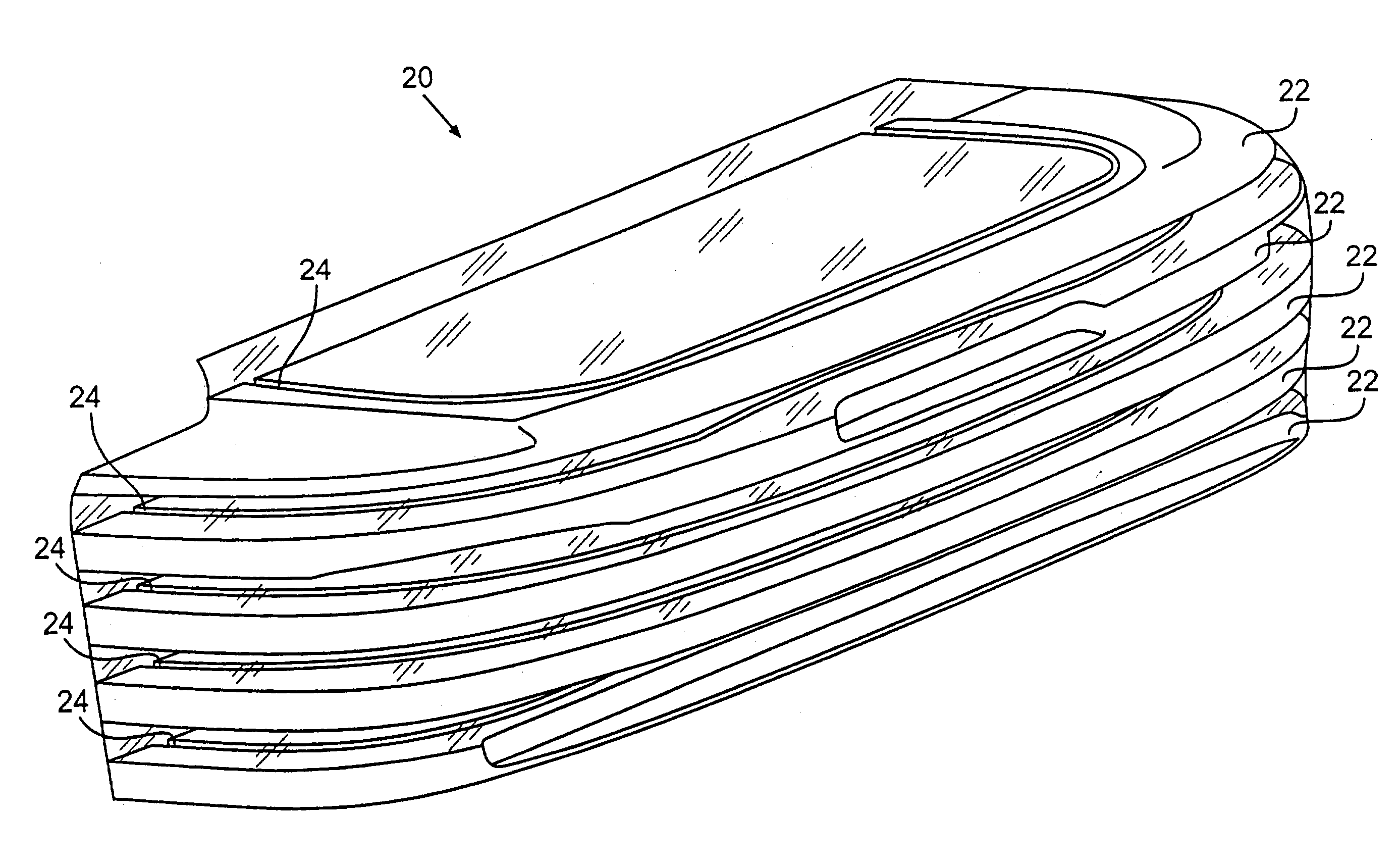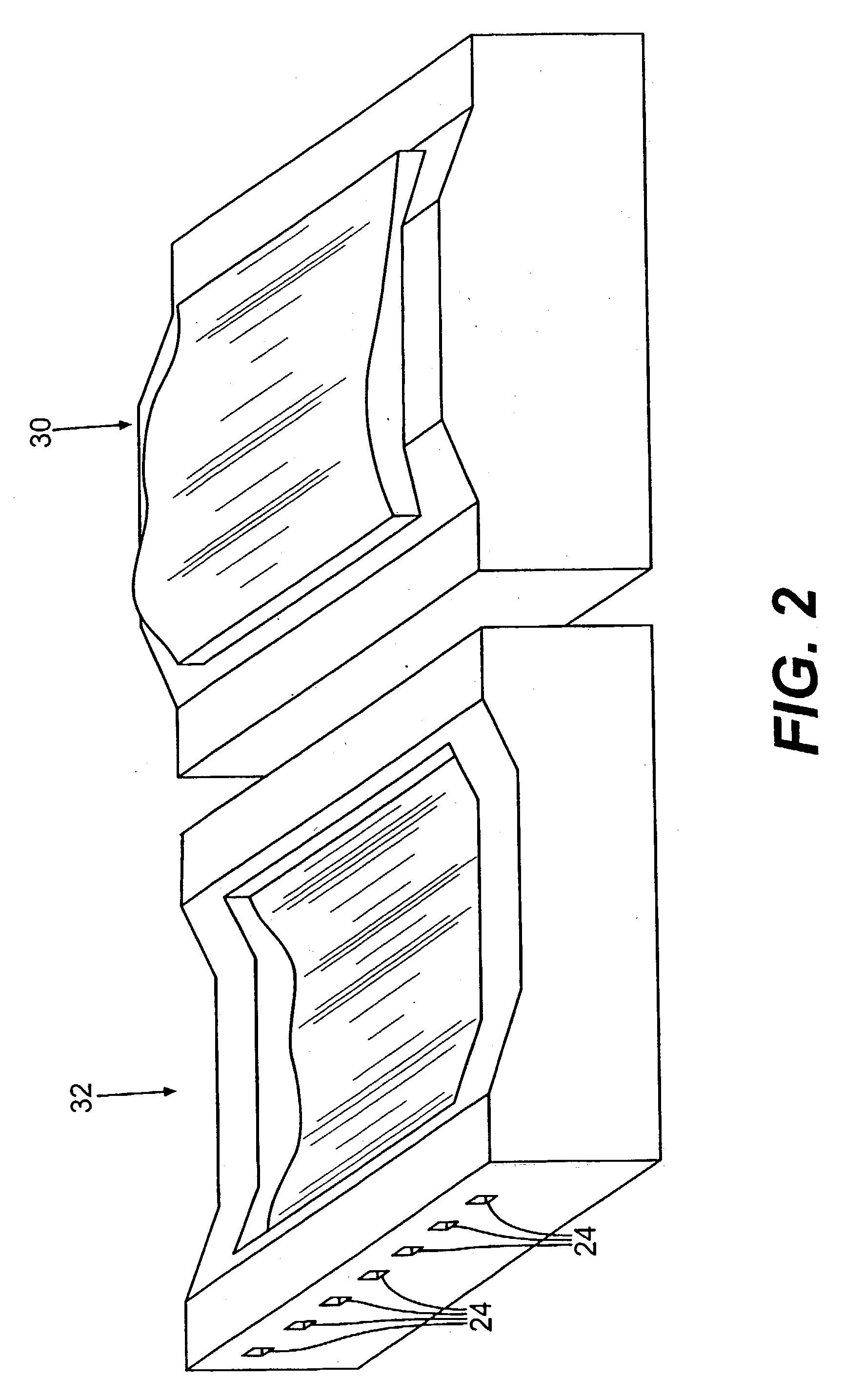Method for manufacturing a near net-shape mold
a manufacturing method and mold technology, applied in the field of mold manufacturing, can solve the problems of large lead time, large amount of manufacturing time, and large number of steps in the manufacturing process, and achieve the effect of reducing the number of steps and long lead time, and reducing the cost of manufacturing
- Summary
- Abstract
- Description
- Claims
- Application Information
AI Technical Summary
Problems solved by technology
Method used
Image
Examples
Embodiment Construction
[0081] Reference will now be made in detail to the present exemplary embodiments of the invention, which are illustrated in the accompanying drawings. Wherever possible, the same reference numbers will be used throughout the drawings to refer to the same or like parts.
[0082] It is anticipated that the inventive process will substantially cut the lead times for manufacturing molds or mold portions, especially large molds but also for medium-sized molds or any mold with a complex geometry, while also providing improved part quality and shorter cycle times by allowing mold features that are unavailable with current techniques. The process could deliver a near net-shape mold or mold portion, ready for finish machining, to the mold maker in a fraction of the time it takes to cast or rough a mold cavity, providing a potential savings of materials and time. In one embodiment, the invention also could allow the incorporation of conformal heating / cooling lines. Such conformal heating / cooling...
PUM
| Property | Measurement | Unit |
|---|---|---|
| depth | aaaaa | aaaaa |
| spindle speeds | aaaaa | aaaaa |
| heights | aaaaa | aaaaa |
Abstract
Description
Claims
Application Information
 Login to View More
Login to View More - R&D
- Intellectual Property
- Life Sciences
- Materials
- Tech Scout
- Unparalleled Data Quality
- Higher Quality Content
- 60% Fewer Hallucinations
Browse by: Latest US Patents, China's latest patents, Technical Efficacy Thesaurus, Application Domain, Technology Topic, Popular Technical Reports.
© 2025 PatSnap. All rights reserved.Legal|Privacy policy|Modern Slavery Act Transparency Statement|Sitemap|About US| Contact US: help@patsnap.com



